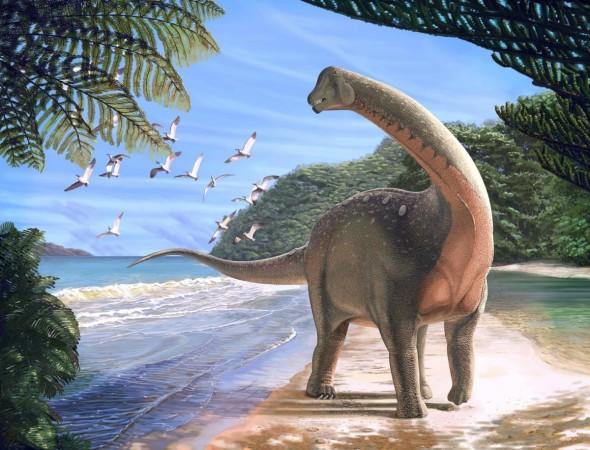
There was a mass extinction event that made way for giant reptiles - dinosaurs to become the dominant species and reign over the Earth for over 180 million years.
Called the Carnian Pluvial Episode (CPE), researchers say that there were 2 separate incidents that made way for dinosaur populations to flourish and climb to the top of the food chain. Till now, there was little knowledge on how dinosaurs became the dominant species on the planet, notes a report by the TechTimes.
A new study carried out by researchers at the MUSE-Museum of Science Trento, Italy, the Universities of Ferrara and Padova, and the University of Bristol has revealed that diversification of dinosaur species is directly linked to the CPE. The CPE happened 230 million years ago, say researchers, where climate on the planet was alternating between dry and humid and back to dry again. This started to trigger extinction events at the time, making way for dinosaurs to grow.
A massive eruption of the Wrangellia flood basalts in what is now Western Canada, notes the report, was responsible for pumping a massive amount of carbon dioxide into the atmosphere which led to rapid global warming, inordinate amounts of rainfall, and the acidification of the oceans. General rainfall levels also increased dramatically, notes the report.
Scientists are calling the fallout of this event one of the most severe crises for life in the history of life on the planet. During this time marine life was rapidly declining, creatures like the crinoids, scallops, corals, ammonoids, and conodonts were starting to vanish, notes the report.
By studying rocks in the Italian Dolomites scientists found that patterns embedded within the rocks show how dinosaur numbers grew over time. First, there were no marks, then suddenly, an exponential number of dino tracks were found. Researchers surmised that it was at this point that populations suddenly exploded.
The end of the CPE, interestingly, coincides with this point as well, noted the researchers. The layers of rocks also show evidence of this, they found. Four pulses of climate disruptions were recorded within a time period of a million years.
Fossil records in Argentina and Brazil also fall in line with these findings notes the report.
Similar to the way dinosaur extinction paved way for mammals to rise and flourish about 65 million years ago, 180 million years before that, other life forms had to die out so that the dinosaurs could take over for the planet for as long as they did.
This study was first published in the journal Nature Communications, titled "Dinosaur diversification linked with the Carnian Pluvial Episode".








